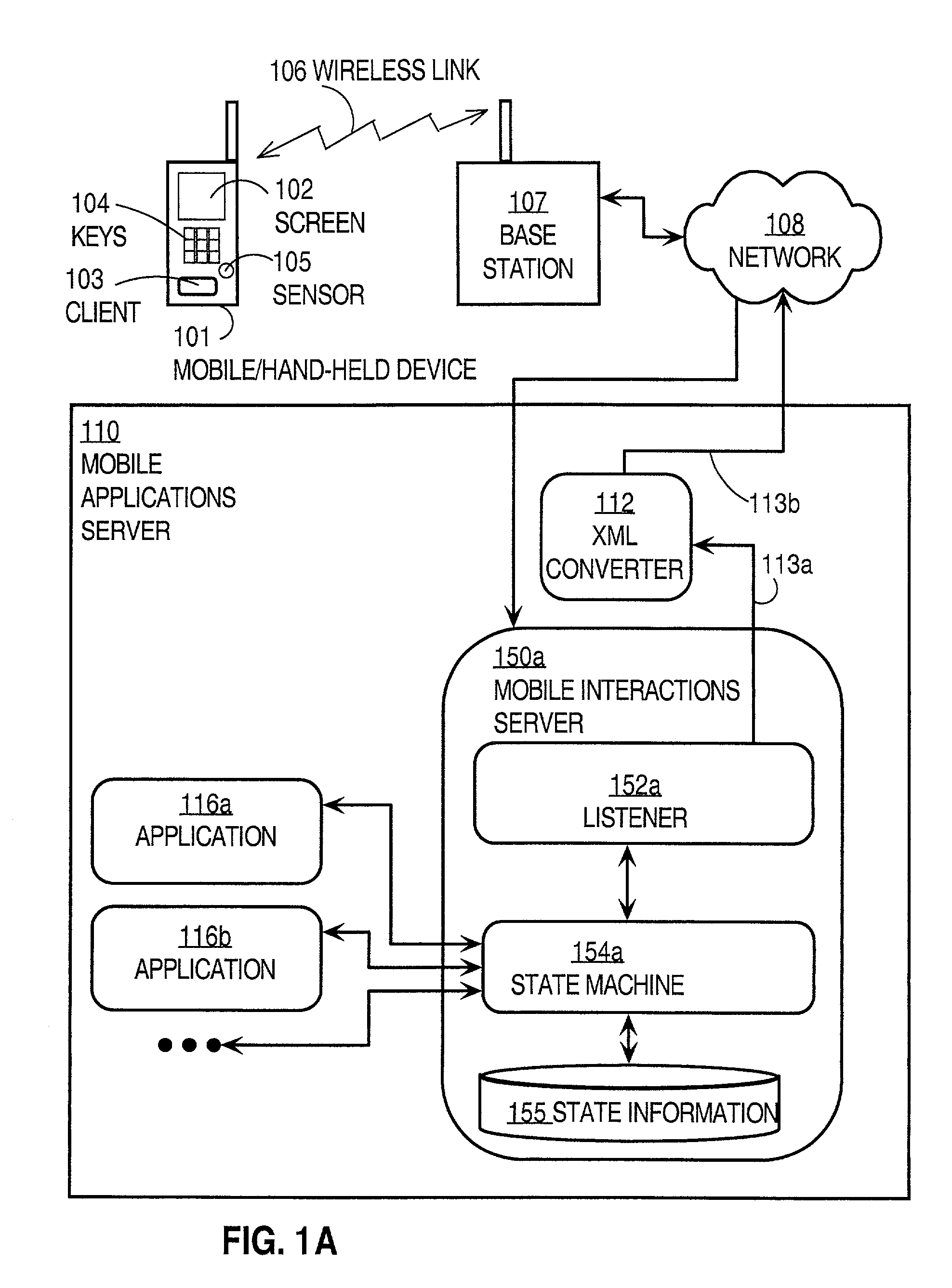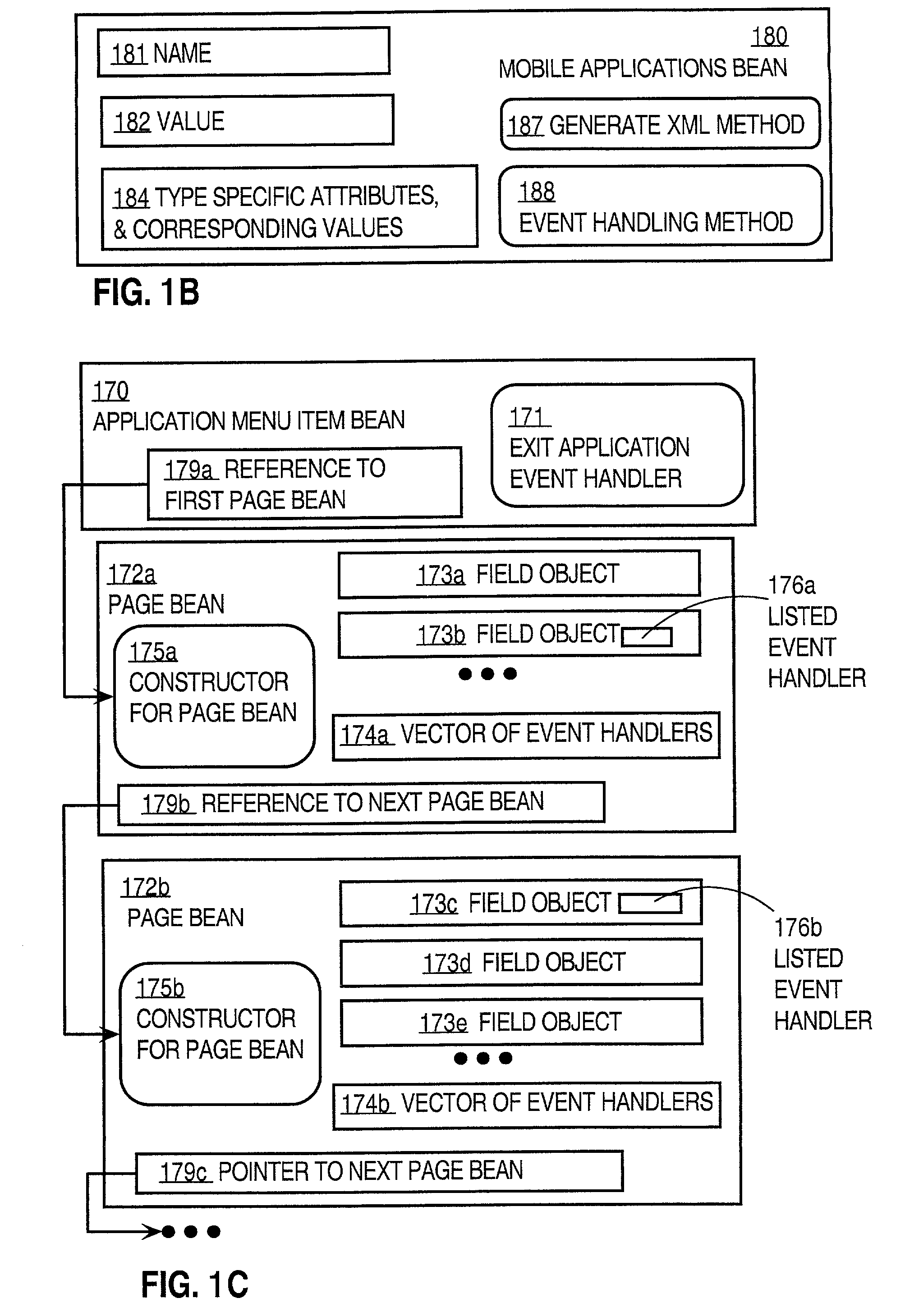Techniques for programming event-driven transactions in mobile applications
a mobile application and event-driven technology, applied in the execution of user interfaces, instruments, wireless networks, etc., can solve the problems of limited hardware and software for handheld devices used by agents of enterprises in the field for these purposes, standard html does not provide for client side validation processes, and the smallest laptops are too cumbersome for some uses
- Summary
- Abstract
- Description
- Claims
- Application Information
AI Technical Summary
Benefits of technology
Problems solved by technology
Method used
Image
Examples
Embodiment Construction
[0044]In the following description, for the purposes of explanation, numerous specific details are set forth in order to provide a thorough understanding of the present invention. It will be apparent, however, to one skilled in the art that the present invention may be practiced without these specific details. In other instances, well-known structures and devices are shown in block diagram form in order to avoid unnecessarily obscuring the present invention.
Operational Context
[0045]To illustrate network applications interacting with mobile devices employing a wireless link, consider FIG. 1A. FIG. 1A is a block diagram that illustrates one embodiment of a mobile applications server 110 connected to a network 108 with which a mobile device 101 communicates over a wireless link 106.
[0046]The mobile device 101 includes a screen display 102, one or more keys 104 and a client process 103 running on a microprocessor (not shown) in the mobile device 101. Some mobile devices may include a se...
PUM
 Login to View More
Login to View More Abstract
Description
Claims
Application Information
 Login to View More
Login to View More - R&D
- Intellectual Property
- Life Sciences
- Materials
- Tech Scout
- Unparalleled Data Quality
- Higher Quality Content
- 60% Fewer Hallucinations
Browse by: Latest US Patents, China's latest patents, Technical Efficacy Thesaurus, Application Domain, Technology Topic, Popular Technical Reports.
© 2025 PatSnap. All rights reserved.Legal|Privacy policy|Modern Slavery Act Transparency Statement|Sitemap|About US| Contact US: help@patsnap.com



